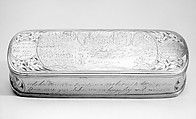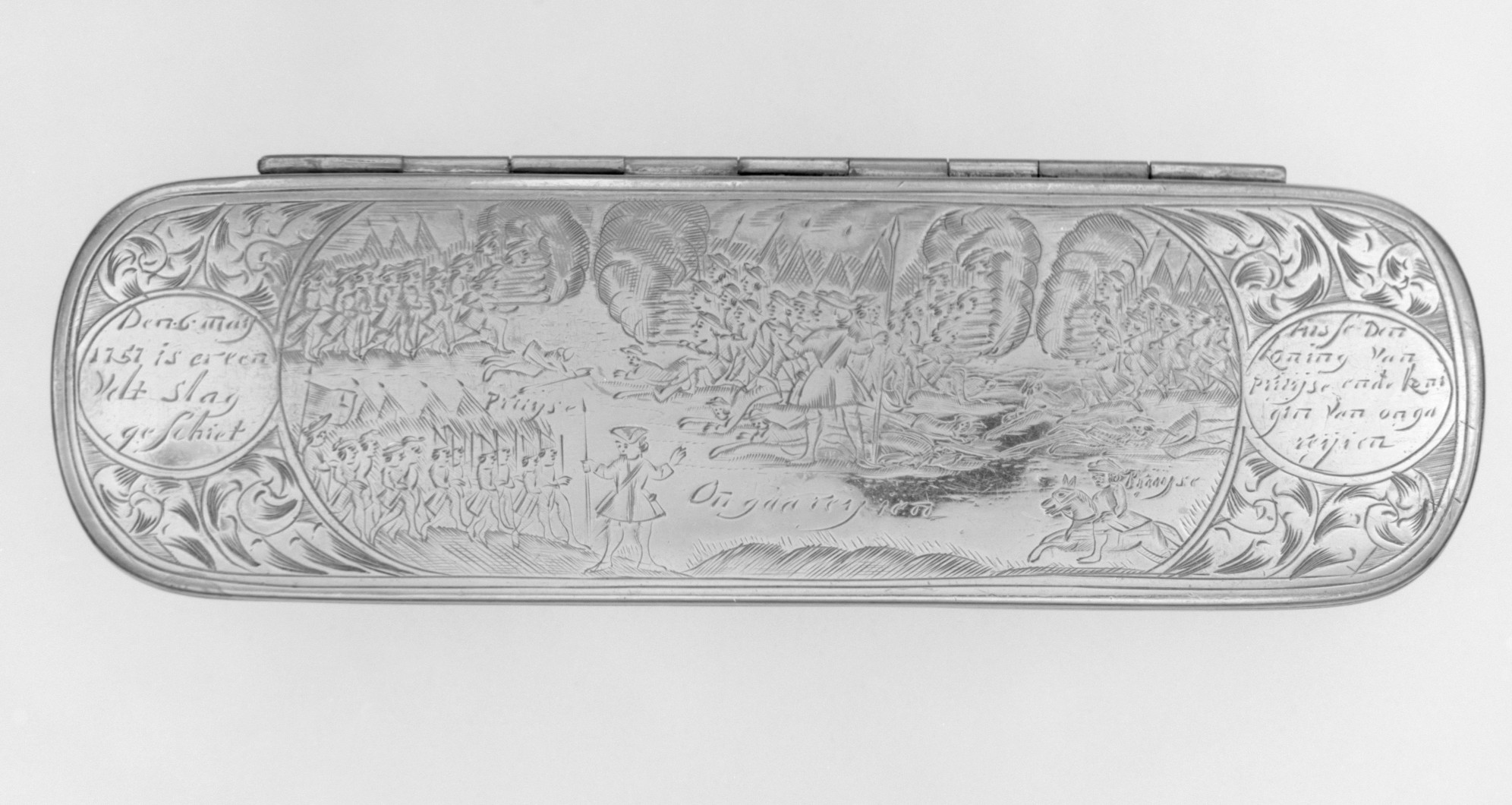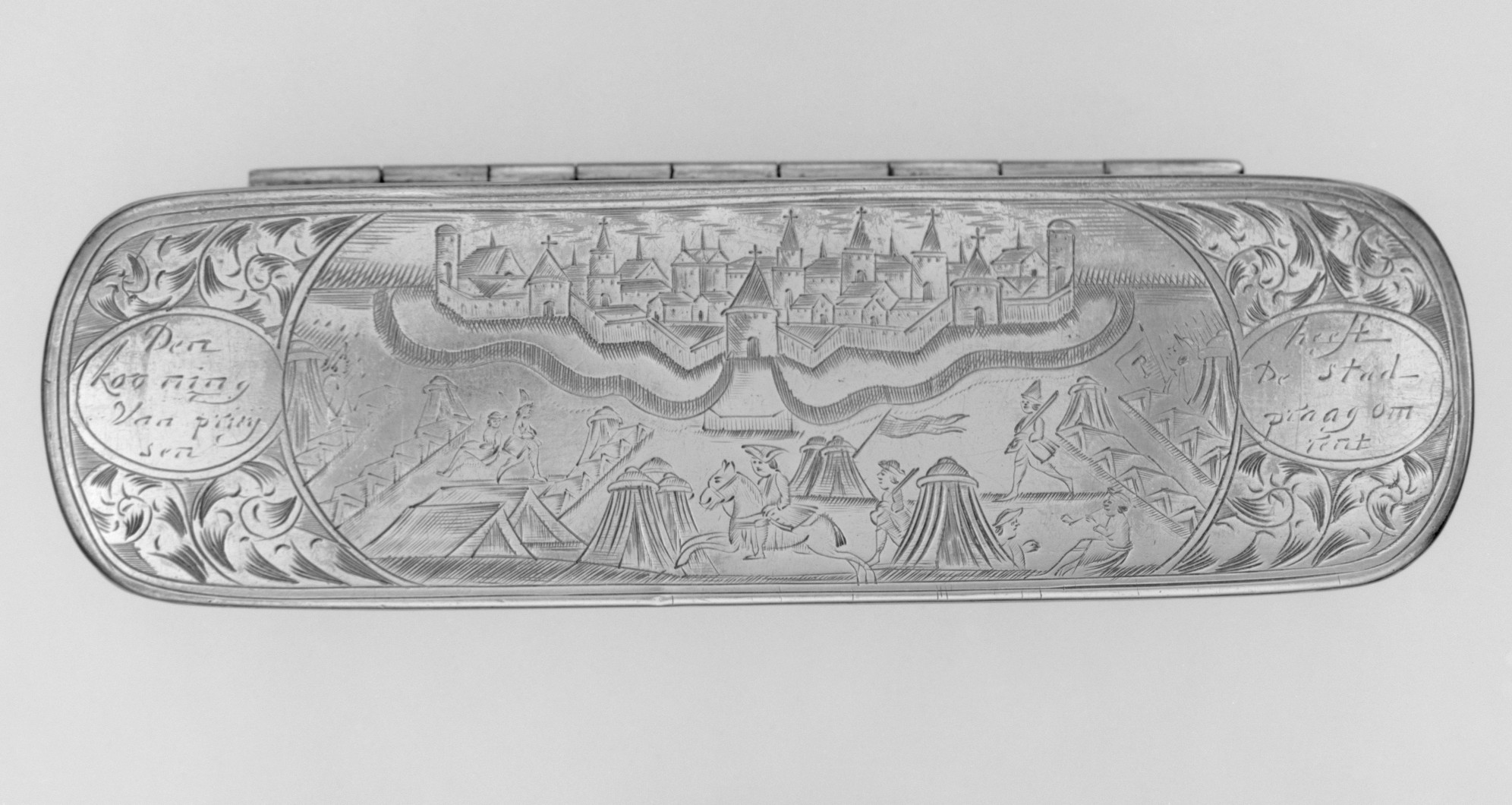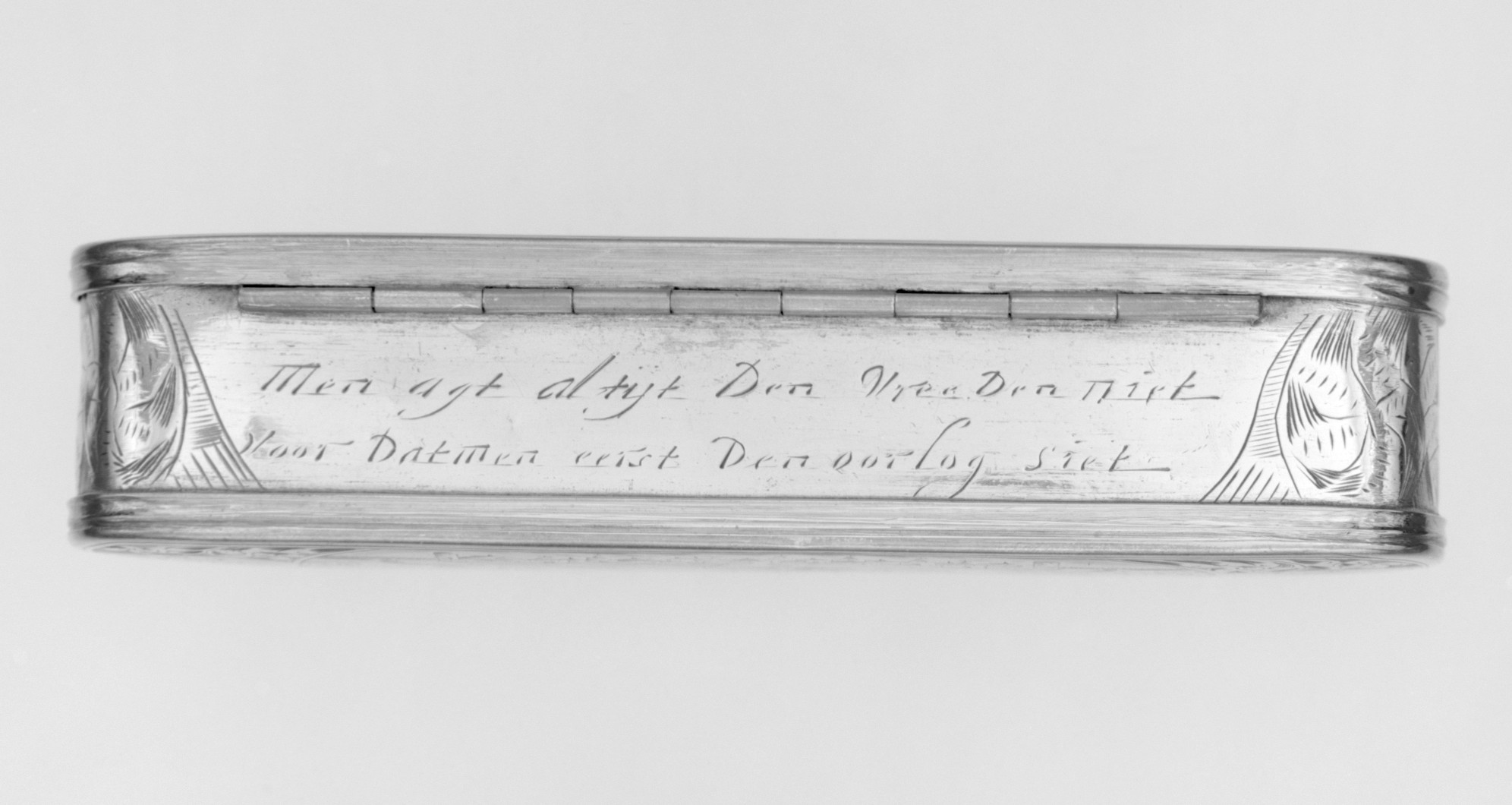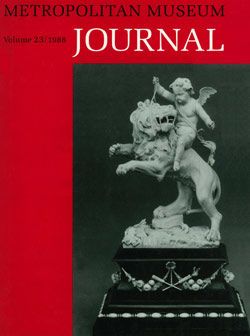Tobacco box
Not on view
An oblong box with rounded ends. The lid features a battle scene from the Seven Years' War, framed by leaf scrolls. The Prussian troops have surrounded the Hungarian army. The various troops are identified by small inscriptions: Pruijse (Prussia) to the left, Ongaareijien (Hungary) in the center, and Pruijse at the right. The two roundels carry this inscription: Den 6. maij 1757 is er een velt slag geschiet / tusse den koning van pruijse en de konigin van ongareijien (On May 6, 1757, a battle took place / between the King of Prussia and the Queen of Hungary [Empress Maria Theresa]).
The underside shows the city of Prague surrounded by Prussian troops. The scene is framed by leaf scrolls and two roundels which are inscribed: Den kooning van pruijsen/heeft de stad praag omrent (The king of Prussia/has surrounded the city of Prague).
The rims are lined, the edges molded. The rounded ends are decorated with scrolls. The front side is inscribed: Als hoesaren en pandoeren uijt het ooste koome gereese dan muegen de boeren en huijsluij wei vreesen (When the hussars and soldiers come racing from the East, then the farmers and home folks should be fearful). Inscribed on the back side is: Men agt aitijt den vreeden niet voor dat men eerst den oorlog siet (Often one does not appreciate peace until one first experiences war).
Frederick II, King of Prussia (1712–1786), invaded Bohemia in 1757. On May 6 of that year one of the most severe battles of the Seven Years' War took place outside Prague. The Austrians (not the Hungarians, as is stated on the box) withdrew inside the fortress of Prague, and Frederick celebrated a victory. The Seven United Provinces maintained neutrality throughout this war.
Due to rights restrictions, this image cannot be enlarged, viewed at full screen, or downloaded.
This artwork is meant to be viewed from right to left. Scroll left to view more.
